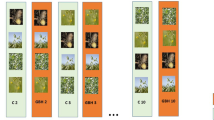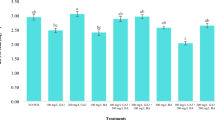Abstract
IN many cases the effectiveness of herbicides has been increased by the addition of surface active agents to the spray1–4, but little information is available about the effects of growth regulators on the uptake and metabolism of herbicides by foliage. The object of this work was to investigate the role of gibberellic acid (GA3) and indolyl-3-acetic acid (IAA) on the absorption, diffusion, transloca-tion, and metabolism of 2-chloro-4,6-bis(isopropylamino)-s-triazine (propazine) by the upper and lower surfaces of tea leaves, Camellia sinensis.
This is a preview of subscription content, access via your institution
Access options
Subscribe to this journal
Receive 51 print issues and online access
$199.00 per year
only $3.90 per issue
Buy this article
- Purchase on Springer Link
- Instant access to full article PDF
Prices may be subject to local taxes which are calculated during checkout
Similar content being viewed by others
References
Biswas, P. L., Weeds, 12, 31 (1964).
Biswas, P. K., and Rogers, M. N., Tuskegee Veterinarian, 6, 61 (1962).
Biswas, P. K., and Rogers, M. N., Indian J. Plant Physiol., 6, 40 (1963).
Biswas, P. K., Goodman, R. N., and Hemphill, D. D., Proc. N.C.W.C.C., 19, 46 (1962).
Author information
Authors and Affiliations
Rights and permissions
About this article
Cite this article
BISWAS, P., HEMPHILL, D. Role of Growth Regulators in the Uptake and Metabolism of s-Triazine Herbicide by Tea Leaves. Nature 207, 215–216 (1965). https://doi.org/10.1038/207215a0
Issue Date:
DOI: https://doi.org/10.1038/207215a0
Comments
By submitting a comment you agree to abide by our Terms and Community Guidelines. If you find something abusive or that does not comply with our terms or guidelines please flag it as inappropriate.



